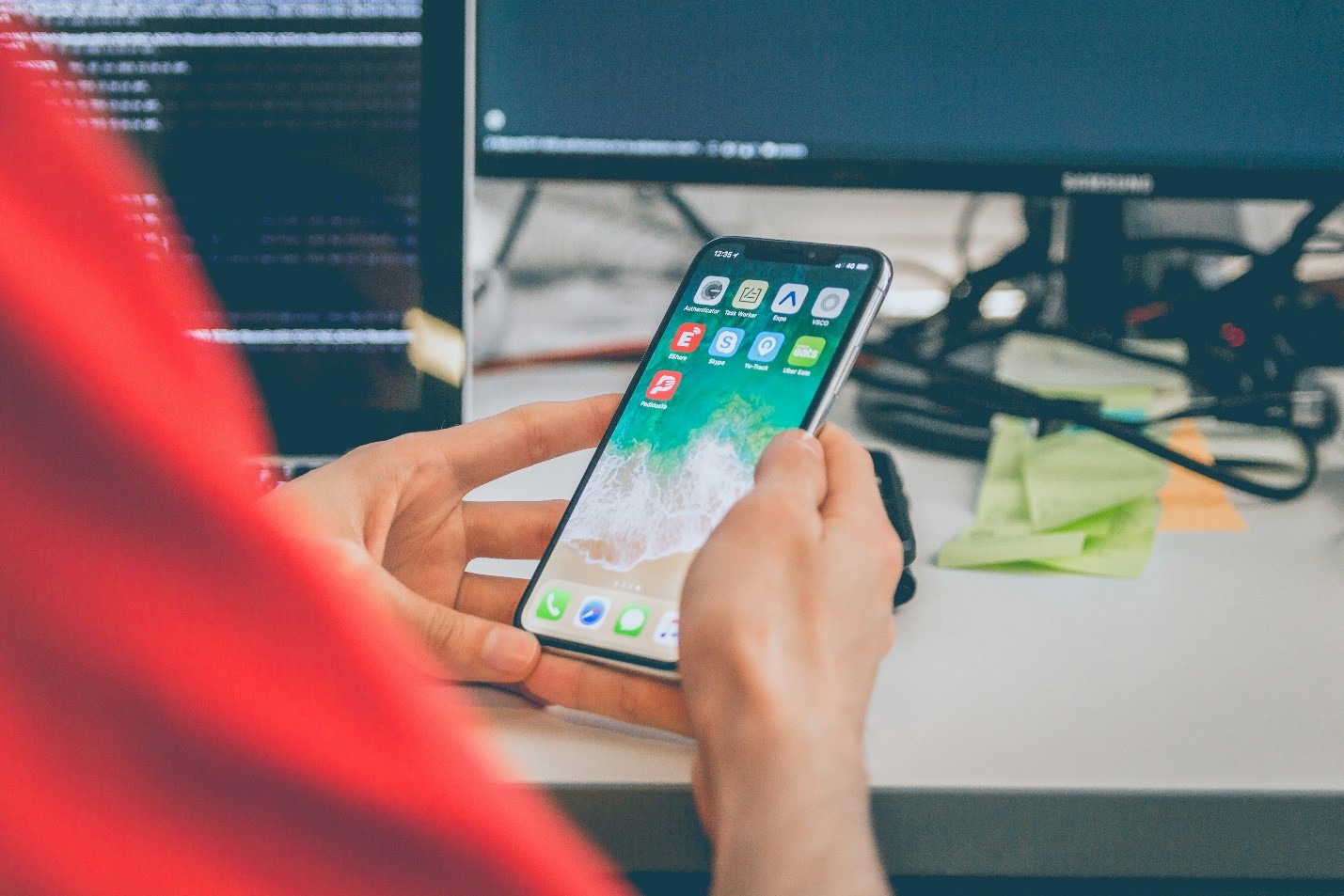How Long Does It Take to Develop an IOS Mobile App?

App development has become such a mainstream service since organizations, corporations and businesses alike have acknowledged the importance of apps and their numerous benefits. If you search for ‘app development company near me’ on your smartphone, which you might do using an app too, you are bound to find one in or near your region. Though a lot of interesting aspects can be discussed around the app development domain, our focus in this blog will be the time needed to develop a mobile app on iOS, since time is of essence and the primary concern for many people availing such services.
Evolution of App Development
App development has undergone a remarkable evolution over the years, transitioning from basic, single-function applications to complex, multi-featured platforms that leverage advanced technologies. Initially, app development was constrained by limited hardware capabilities and simplistic programming languages, resulting in rudimentary apps with minimal user interaction.
However, the advent of smartphones, robust operating systems like iOS and Android, and the proliferation of powerful development tools have revolutionized the field. Modern app and game development services incorporate use of sophisticated elements enabling developers to create highly interactive, personalized, and scalable apps. This evolution has not only enhanced user experiences but also expanded the possibilities for innovation and connectivity in our daily lives.
App Development – Android vs iOS
There are two common platforms that host apps and are widely used by the audience on a global level. Though the same app may function in the same way on both these operating systems, there are differences in apps hosted by these platforms and their respective development.
- App Development on Android
Android app development offers extensive opportunities due to its open-source nature and wide reach across diverse devices. Using Java and Kotlin, developers can tap into a broad global market. However, this diversity means ensuring compatibility across various screen sizes, hardware configurations, and OS versions can be challenging. The Google Play Store’s straightforward submission process allows for quick updates, while Android’s flexible environment supports extensive customization and integration with third-party services, fostering innovation and tailored user experiences.
- App Development on iOS
iOS app development is known for its streamlined ecosystem, premium user experience, and robust security. Using Swift and Objective-C, developers benefit from the uniformity of Apple devices, simplifying development and ensuring consistent user experiences. The rigorous App Store review process maintains high standards of quality and security. iOS users often spend more on apps and in-app purchases, offering higher revenue potential. Comprehensive tools like Xcode and TestFlight further enhance the development process, enabling the creation of high-quality, polished apps.
App Development on Vision Pro
A special mention here goes to app development for Apple’s Vision Pro which is a new product with the ability to become a mainstream platform. App development for this platform offers a unique opportunity to create groundbreaking experiences. Imagine interacting with virtual objects in your real environment, learning through immersive simulations, or collaborating with colleagues in a shared virtual space. Developers that belong to a vision pro app development company can leverage familiar tools like SwiftUI and RealityKit to craft stunning visuals and intuitive interfaces, pushing the boundaries of what’s possible with mixed reality. This is a chance to redefine how we interact with technology and redefine the very nature of user experiences.
The App Development Process
App development is a time-consuming process since it has various stages to create a properly planned app that fulfills all the needs of any client. When it comes to technicalities, the process might differ a bit based on the platform for which it is being developed. Our focus in this blog will be on the app development process and, more specifically, its timeframe for all Apple product users.
- Idea and Planning (1-2 Weeks)
Like every product that belongs to a project life cycle, the first step in developing an iOS app is ideation and planning. This stage involves:
- Defining the App Concept: Clearly outlining the app’s purpose, target audience, and key features.
- Market Research: Analyzing the competition and understanding user needs to ensure the app will stand out.
- Creating a Project Plan: Developing a detailed project plan, including timelines, milestones, and resources required.
Timeframe: This phase typically takes 1 to 2 weeks, depending on the clarity of the initial idea, the nature of the app intended to be developed and the depth of market research needed.
- Wireframing and Design (2-4 Weeks)
Once the app concept is solidified, the next step is to create wireframes and design the app’s user interface (UI). This outlines the requirement to help developers get a clearer approach of the project.
- Wireframing: Developing a visual guide that represents the skeletal framework of the app.
- UI/UX Design: Creating detailed designs for the app’s user interface, focusing on user experience (UX) and visual aesthetics.
Timeframe: Designing a comprehensive and user-friendly UI can take anywhere from 2 to 4 weeks, depending on the complexity and number of screens.
- Technical Specification and Architecture (1-2 Weeks)
Every action requires planning in order to execute it efficiently, Therefore, before coding begins, it’s essential to define the technical specifications and architecture.
- Technical Specifications: Documenting the technical requirements and choosing the right technologies and tools.
- App Architecture: Designing the app’s architecture to ensure scalability, security, and performance.
Timeframe: This phase generally takes 1 to 2 weeks.
- Development (6-12 Weeks)
The development phase is where the actual coding happens. This stage is typically divided into two parts: front-end and back-end development.
- Front-End Development: Building the client-side of the app, focusing on the interface and user interactions.
- Back-End Development: Setting up the server, database, and application logic to support the front-end functionality.
Timeframe: Depending on the app’s complexity and the number of features, this phase can take anywhere from 6 to 12 weeks. Simple apps with basic functionality might be developed in 6 to 8 weeks, while more complex apps with advanced features can take up to 12 weeks or more.
- Testing and Quality Assurance (2-4 Weeks)
Testing is a critical phase to ensure the app functions correctly and provides a good user experience.
- Functional Testing: Verifying that all features work as intended.
- Usability Testing: Ensuring the app is easy to use and navigate.
- Performance Testing: Checking the app’s performance under different conditions.
- Security Testing: Ensuring the app is secure and free from vulnerabilities.
Timeframe: Comprehensive testing and quality assurance can take 2 to 4 weeks, depending on the app’s complexity and the number of issues identified.
- Deployment and Launch (1-2 Weeks)
After thorough testing and final refinements, the app is ready for deployment.
- App Store Submission: Preparing the app for submission, including creating the app store listing, screenshots, and descriptions.
- Approval Process: Apple’s review process can take a few days to a couple of weeks, depending on the app’s complexity and any potential issues.
Timeframe: The deployment and launch phase usually takes 1 to 2 weeks, including the time for Apple’s review and approval.
- Post-Launch Support and Maintenance (Ongoing)
Development doesn’t end with the app’s launch. Ongoing support and maintenance are crucial to ensure the app remains functional and up-to-date.
- Bug Fixes: Addressing any issues that arise post-launch.
- Updates and Improvements: Adding new features and improvements based on user feedback.
- Compatibility Updates: Ensuring the app remains compatible with the latest iOS versions and devices.
Timeframe: Post-launch support and maintenance are ongoing processes that continue for the app’s lifecycle. This is a process but one that cannot be ignored at any cost if you want your app to last its intended life.
Factors Influencing Development Time
There are several factors that can influence the overall development time for an iOS app. These factors differ from one app to another but are crucial in determining the overall timeline of the development phase.
- Complexity and Features: More complex apps with advanced features will take longer to develop.
- Design Requirements: Custom designs and intricate UI/UX elements can extend the design and development phases.
- Development Team Experience: An experienced development team can work more efficiently, reducing the development time.
- Third-Party Integrations: Integrating third-party services or APIs can add to the development time.
- Client Feedback and Revisions: Frequent changes and revisions based on client feedback can extend the development timeline.
Conclusion
The time it takes to develop an iOS mobile app can vary widely based on several factors, but a typical development timeline ranges from 3 to 6 months. By understanding the different stages of app development and the factors that influence the timeline, businesses and developers can better plan and manage their projects to ensure timely and successful app launches. Opting for a structured approach and working with an experienced development team can help streamline the process and bring your app idea to life efficiently.



